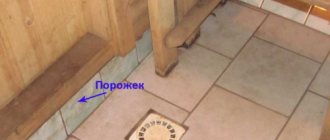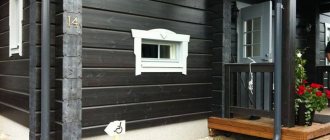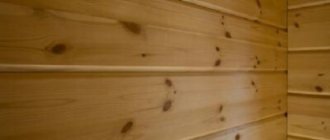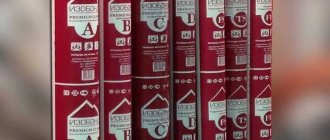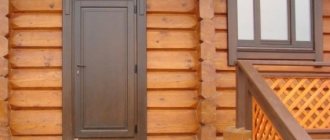Thanks to modern technologies, today wooden doors not only look beautiful, but are also of high quality, which is difficult not to pay attention to.
But not everyone can afford to decorate their premises with high-quality doors, because such a product made from natural wood species costs a lot of money. But, as a budget option, you can purchase a “semi-finished product” - a door made of solid wood, for example oak, wengue or pine (usually sold in standard sizes), without decorative elements, and give the door leaf an original design with your own hands, painting the wood in the most suitable way LMB.
Unfortunately, buying a new interior door block is more problematic for owners of apartments with an old layout, because the “original” doors have non-standard sizes. In this case, you will have to make doors to order, which will cost a pretty penny. Therefore, it makes sense to restore old doors, thereby saving the family budget and making the apartment unique and unique.
Next, we will tell you how to properly prepare the surface, in what sequence the painting work should be carried out and what paint to paint a wooden door so that the final result looks not only good, but also unusual, if the style of the room requires it.
How can you paint wooden doors?
How to paint a wooden door
Today the question is “How to paint a wooden door in an apartment?” is not very relevant, because the market for paints and varnishes is quite diverse. But before you paint an interior wooden door in your house, you need to think about whether you need to preserve the structure of the natural material, or whether you need to completely mask the grain of the wood by painting the canvas with an opaque layer. Taking your own wishes as a basis, pay attention to the following paintwork materials:
- Enamels with an opaque base.
- Oil based paints.
- Transparent or tinted varnish.
- Oil based impregnations.
- Stain.
- Other paints and varnishes that can refresh the color of wood or give it a beautiful, correct shade.
The table below shows the classification of coatings.
| Classification: | Varieties: | |||
| View: | Varnish. | Dye. | Impregnation. | |
| Chemical composition: | Organic base. | Water based. | ||
| Mode of application: | Internal. | Outdoor. | Combined. | |
| Protective effect: | From changes in temperature and moisture. | From mechanical damage. | From chemical and organic irritants. | |
Of course, how to paint an old wooden door is up to you, but it’s worth listening to the opinions of experienced craftsmen. Many finishers recommend:
- Water-based acrylic material (substances containing acrylic have the most optimal consistency, which is important when working with brushes, and also spread well over the surface);
- Alkyd material (has a good ability to repel moisture, is not afraid of the sun, frost and sudden changes in temperature, dries quickly).
A wooden door painted with acrylic paint.
If you need to treat the door to a bathhouse, it is better to use alkyd paint for outdoor work, which is less susceptible to adverse factors. Using such material, it will be possible to cover the doors to the house, as well as interior blocks.
Important! Please note that doors can only be painted with alkyd-containing paints on dry surfaces. If the base of the door is wet, the paint will quickly peel and peel. And if you need to varnish the door, do not use drying oil, only stain will help you!
If you are wondering “how to paint a wooden door in a country house or in an apartment?”, you should already understand that applying paint is not carried out in one stage. Sometimes, to get the desired effect, you have to use different formulations. Initially, specialists use impregnation, which can give a certain tone to the door, after which they apply a decorative layer.
Painting wooden doors (video)
Advantages of stain and varnish
Protective stains differ from classic impregnations. If the door is coated with this composition, it will “breathe”. The coating in this case is resistant to moisture and cracking. There is a large selection of stains on the market. They are suitable for solid wood products:
Some of the stains are transparent. Such solutions emphasize the beauty of wood and protect it from harmful influences. Brushes must be used for application. Read the instructions carefully: some manufacturers suggest applying one layer, while some recommend applying several layers.
It is advisable to coat a door that has been previously painted with clear varnish. In this case, it will be less susceptible to external negative influences and will retain the shine and color of the coating. If you have coated your door with acrylic varnish and notice that there is a whitish tint left, don't worry - it will become transparent after it dries completely.
By choosing a special cold-curing varnish, you can make the coating of a solid pine door glossy or matte.
Sequence of work
The door structure is not only the door itself, so it is very important to carefully carry out the preparatory process. Of course, you can repaint only the canvas, but this way the jambs will fall out of the overall picture. And so, the process of painting the door should be carried out in the following sequence:
- The door structure is removed and placed on a stable surface (optionally, a pair of stools). If alkyd paint is used for work, it is better to move the work to the open air, because such paints and varnishes have a pungent odor.
Preparing a wooden door for painting
- Then, without removing the canvas itself, it is fixed with wedges so that the paneled brush has access to all hard-to-reach places. It is also necessary to block the doors so that during the drying process the doors do not slam shut and damage the new layer of paint.
Whatever route you take, you will still have to dismantle the fittings. If there are permanent parts, they can be hidden under paper or foil.
Paint for an interior door over varnish
Good day everyone! The apartment has wooden doors of good quality from the previous owners, but they are covered with transparent or yellowish varnish (one, maximum 2 layers).. Now the renovation of 2 rooms + a corridor is being completed and there is no money left for the doors. You could leave it as is, but the color doesn't suit it. Need a dark color. Because I don’t understand paints - a lot of questions arose:
- How to prepare the doors? Do I need to remove the varnish completely (this is very problematic) or just make it matte?
- What grit sandpaper should I use? Or are there varnish removers?
- What paint or dark varnish should I use? (paint must have minimal odor since there is a 5 month old baby at home)?
- Do you need soil or not?
I can only paint with a brush or roller - I have no other options. You need to paint it brown, dark gray, black. It is not necessary that the structure of the tree be visible..
Alexey_oz wrote: should I remove the varnish completely (this is very problematic) or just make it matte?
Not necessarily, for this there are now primers for old paint -,. All these soils are water based.
Alexey_oz wrote: What paint or dark varnish should I use? (paint must have minimal odor since there is a 5 month old baby at home)?
Water-based paint or varnish. Apply everything, for example, with a velor roller. The length of the pile is about 4 mm. If you need to clean up the varnish a little, the sandpaper is 220-240.
The VGT company produces various varnishes and paints, maybe you can choose something from them, consult with consultants. When I painted with matte and glossy paints from various manufacturers, from my little experience I concluded that matte paints have greater coverage than gloss; paint consumption is usually written on the can or on the manufacturer’s website. If the paint appears dry, be sure to add the recommended amount of water, usually up to 5%, sometimes 10-15%. I wish you good luck and success.
Alexey_oz, How did you determine the number of layers of varnish by eye? Renovation in 2 rooms, and the child is 5 months old. It's not the smell that's terrible, it's the dust. If you weren’t afraid of the smell, then any alkyd paint tinted in the color you want would solve the problem. With doors and varnish, you need to understand what kind of varnish it was and how water-based paint will behave on it. Take the ceiling paint and brush the door once from the back end - if the paint has spread and no traces of the brush are visible, then everything is OK. If the paint has dried, but brush marks remain, then the varnish was organic and will either have to be completely sanded off (very labor-intensive) or primed. I can recommend Dulux Super Grip Primer - water-based, does not stink, can be applied to almost anything (any surface that does not absorb water). Paint the top with water-based emulsion tinted in the color you want. Just don’t use matte water-based emulsion - it’s too dirty for a door - dirt will accumulate in the place where you often touch the door with your hand. PS If time is more important, then just paint Dulux Diamond Soft Sheen (aka Diamond Eggshell) - water-based, almost odorless, tinted in any color, can also be used over old oil-based (alkyd) paints, the only drawback is that it’s expensive.
Preparing the door covering
Well, let's figure it out further, how to paint a door correctly? Preparatory work is carried out according to the following scheme:
- Remove all old coating, even primer and putty, until the wood itself remains. For this work, you can use a grinder, a hair dryer, or special cleaning compounds.
- Then you need to sand the surface, remove any defects, sand off small paint residues, and degrease. This work cannot be done without a sander, which is best connected to a vacuum cleaner. If you don’t have such a device, you can get by with medium-grain sandpaper.
Plastering a door
- When you have completely managed to sand the canvas and prime it, you can move on to puttying large flaws. If you plan to use varnish as a finishing coat, it is better to use a special composition for wood. If the decorative dye is not transparent, you don’t have to worry about the color of the putty. Don't forget about the gaps at the walls and baseboards!
- After puttying, after waiting the time specified by the manufacturer of the mixture, you need to sand again, masking the abrasions. You can immediately use a medium-grained cloth, and then finish with a fine-abrasive one.
Please note that if there are large dents on the surface and you plan to use an opaque or dark material for the finishing layer, use auto putty. This mixture does not contain glass fibers.
If the doors under the old finishing materials have darkened, and you would like to simply open them with varnish, preserving the structure and pattern of the wood, problem areas can be lightened. To do this, you can prepare a simple bleach with your own hands: mix bleach with water in a ratio of 1:3. When the surface is completely processed, wiped with a rag and dried (so that the paint does not begin to swell), you can begin directly painting the door.
Features of applying stain and varnish
Any wood is suitable for coating with stain: pine, oak, birch. It should be applied generously so that the surface is saturated. After the wood has absorbed the stain, you need to remove the residue. For washing, use a brush and acetone. It is necessary to carry out this procedure until the composition stops being washed off. After this, the door should dry well.
Varnishing is carried out in two stages. After the first layer has been applied, you need to wait for it to dry and remove any roughness and unevenness with sandpaper. After this, it will be necessary to varnish the coating again.
Painting veneered fabric
If your interior doors are made of veneer, then the sanding procedure should be carried out with extreme caution. It is unacceptable to use grinding machines - they can damage the top layer of veneer. The work must be done manually, and it is better to entrust this task to professionals.
It is necessary to carefully select the coating material:
- If the door is completely new and you are simply not satisfied with its color, then you can do without sanding. Just choose the varnish of the desired shade and get to work. If there are small defects, you can simply varnish them and then rub them with polish.
- Doors made of artificial veneer are suitable for painting. But there are some difficulties associated with the fact that such a door has a smooth surface from which paint will roll off. You can use a primer, but in this case the effect of the natural wood structure will not be preserved.
In this case, the paint must be applied in two layers. To paint a veneer door, you should choose water-based paints. If the paint structure is dense, the individual coating pattern will be lost.
Before processing a veneer door, carefully consider and evaluate the scope of the upcoming work. If there is a small flaw in the form of a scratch, you can get by with local painting. If you need to radically change the color, carefully choose the coating. If you change the surface of the outer layer with chemical dyes, the environmental friendliness will be compromised.
If you follow the suggested tips and recommendations, updated interior doors made of solid pine or other wood will become your pride and will enliven the interior of your apartment.
Source
How is a typical door painted?
Painting a wooden door
We told you how to paint a wooden entrance door or an interior door, now it’s time to talk about how to do simple painting to avoid smudges and other problems. If you need to update the outside canvas or paint only the doors, there is no point in buying a spray bottle.
To do this, it will be enough to buy a narrow brush (for hard-to-reach places) and a roller that will suit any canvas (natural wood, fiberboard, MDF, Canadian, etc.). The only drawback of brushes is that they often lose hair, so before work you need to fluff it up so that everything unnecessary and poorly fixed falls out, so as not to spoil the finish.
For panel doors, it is better to use a roller so that the paint applies evenly. Work begins from the end, moving to the right. You will have to paint the canvas in 3 passes, so each subsequent layer should be applied in opposite movements. If painting is done on any other surface, do not allow an excess of paint to prevent smudges from forming.
Advantages of stain and varnish
For wood, stain and varnish not only give a beautiful appearance, but also additionally protect the natural material from aging. A combined coating of two components is often used. The stain penetrates deep into the wood, where, together with tannins, it forms a protective barrier against moisture and preserves the natural color of the wood from fading. The varnish creates a decorative shine on the door and also additionally protects it from moisture.
How to use stain correctly?
Painting a door with stain
To prevent the wood from absorbing excess moisture and for the paint to apply evenly, the prepared canvas needs to be slightly moistened. All horizontal surfaces are treated with stain along the grain and then across it. The finishing layer is also applied in the longitudinal direction.
The jambs and parts that have not been dismantled begin to be covered from below so that the drops do not touch the still untouched areas. This sequence of actions is followed if the finishing layer is an opaque material. When the surface treated with stain absorbs moisture, the wood fibers straighten, which is why you will need to sand the canvas with zero sandpaper and repeat the procedure.
It is also worth noting that after staining (when the dye dries) the wood becomes lighter. Therefore, you need to coat it as many times as necessary to achieve the desired color. If you want to speed up the process, you can use an alcohol-based stain. The surface treated with this composition will not require re-grinding. But, water-soluble materials are considered safer, will not smell bad and are more popular.
Where to start updating the canvas
The process includes the following steps:
- Before painting, remove the door from its hinges and remove decorative elements.
- Remove the top layer of coating. If you do not remove it, the effect of subsequent painting will be insignificant, and the varnish or paint will lie unevenly and may peel off over time.
- Remember that when sanding with sandpaper you need to make smooth movements along the grain. When cross-sanding, grooves will be visible after the final varnish coating.
- After removing the top layer, cover all cracks and potholes with putty.
- Sand the solid pine surface a second time. The presence of roughness and unevenness is unacceptable.
- After this, vacuum the door, wipe it with a damp cloth and dry it thoroughly.
- It is easier to paint in a horizontal position. This way the coating will lie flat, and it will be much easier to carry out the work this way.
How to imitate wood?
Advice! Today, the design of premises in the Provence style, the laconicism of which few people previously knew, is very popular. Furniture and doors for rooms made in this style are usually chosen in light pastel colors; imitation of antiquity is in great demand.
Adhering to this style when decorating doors with your own hands, a water-based emulsion or other bleached matte coloring composition can help. At the same time, many people wonder whether it is possible to paint wooden doors with water-based paint? Of course you can, why such doubts?
For such substances, you can use both a spray gun and rollers or brushes. However, on the Internet you can find many videos and photos of instructions on how to paint a wooden door white with emulsion, read in more detail, such skills for artificial aging will not hurt you!
How to imitate a tree pattern
And so, to imitate a tree pattern on any base (including metal) you need:
- Paint the canvas yellowish, grayish, beige or white and dry.
- Get some liquid soap and a brush, and lubricate the desired area.
- Take a dark dye and apply it to the surface.
- Remove liquid soap.
Also, to create a retro door, purchase a special brush, which is sold at any hardware store. The brush is used to make movements, as if combing hair, over the entire surface in order to touch the soft fibers of the rock. The surface can then be pigmented in different shades.
Thanks to such manipulations, the structure of the surface into which paint of different shades penetrates is disrupted. This will create the effect of aged wood with the necessary curls. When the surface dries, it is sanded and finished. As you can see, it’s not difficult to give even old doors a new lease of life on your own; the main thing is to follow the rules and be consistent in your work.
Painting veneered fabric
A wooden door covered with veneer cannot be painted with compounds based on aggressive solvents. First of all, this applies to nitro paint. Due to chemical exposure, matte spots will appear on the veneer. It is better to choose water-based, glyphthalic or polyurethane-based tinted varnishes.
To paint a varnished veneered wooden door, the surface is cleaned using a special floor solution. After removing the old varnish, the veneer is primed, and when dry, it is painted.
It is necessary to renew the entire wooden door block if the coating is damaged over a large area. It is easier to wipe out small scratches by matching the color of paint or varnish.
Source
Photo gallery of finished works
What to consider when choosing paint?
Having decided to independently restore interior wooden doors, you need to learn an important rule: odorless paint is intended for interior work, and all other enamels and varnishes are for external use.
When choosing enamel for windows and doors, take into account the characteristics of the canvas:
- The door block is made from different types of wood and waste from the woodworking industry. The density of the material determines the amount of paint absorption before it dries. An extra layer is an additional cost. When choosing an expensive paint and varnish material, it is wise to use drying oil. After impregnation, loose wood will be covered with a film, and paint absorption will decrease.
- The consumption of varnish or enamel for doors depends on the surface. For a smooth one, just apply two thin coats of paint. Rough material requires more layers.
- When restoring door blocks, it will not be possible to completely remove the previous coating. The new paint and varnish material should not contain aggressive substances that corrode the old paint. During the reaction, swelling and peeling will appear on the canvas.
Additionally, when choosing a paint and varnish material, the intensity of use of the door block, as well as the level of humidity and ambient temperature
The choice of color is a personal preference. The new canvas looks beautiful under clear varnish or with the addition of stain. After cleaning, it is better to cover the old door with enamel, choosing the desired color.
Frequent changes to the interior are not complete without repainting the door block. To avoid future difficulties, choose a paint material that is easily removed from the surface.
Features of painting door panels
It often happens that old doorways have a good frame and panel, but have lost their original luster. An affordable, simple method of updating is coating with coloring materials. Any person can handle this kind of work. It is enough to know the properties of the paint and varnish materials from which the doors are made. Attention is paid to compliance with the technology of painting structures:
- Paneled canvases. Before painting, they are disassembled into elements, since the number of joints leads to wear and requires updating.
- Solid wood: heavy structures that convey the natural structure of wood. To update, use varnish or paint for such wood-look doors.
With varnish applied
- MDF. Painting the structure is simple, but before doing this, carefully prepare the surface.
Dyeing technology
The door is prepared, the paint and varnish material has been selected, all that remains is the small matter - let's start painting. But first you need to prepare your workplace and tools. The canvas should be laid on a surface previously covered with plastic film, and the brush should be rinsed with warm water and combed - this will help remove poorly fixed hairs that can spoil the dyeing result. The instructions below will tell you how to properly paint a wooden door.
Painting with enamel or varnish
Doing the painting yourself is very easy if you approach this process correctly. First, the surface must be treated with a primer, this will improve the adhesion of the coloring material to the base, and the coating will last longer after drying.
The following step-by-step instructions will help you achieve high-quality results:
- Open the can of paint and mix the composition thoroughly. If necessary, dilute with a solvent (if the instructions on the package allow this). Pour some paint into the paint tray.
- Dip the brush into the paint and first apply it to all protruding elements (panels, ends), as well as corners.
- Next, paint the flat areas evenly using a roller. You should start from the upper left corner, gradually moving to the right.
- One layer of paint will not be enough, so after the first has dried, apply a second layer (the more, the better), but only in the opposite direction.
- After the door leaf has completely dried, you need to turn it over to the other side and repeat all the same steps.
Applying varnish is no different from the process described above. However, there is one difference - you need to perform interlayer sanding. After each layer (well dried), the surface is sanded with medium-grain sandpaper. With each subsequent layer, the grain of the sandpaper should be smaller. The finishing layer on a varnished surface does not require such treatment.
On video: instructions for painting a door - step by step.
Stain coating
If a stain has been chosen, then the doors do not need priming before painting, since the composition penetrates deeply into the wood fibers. There are several painting methods: rubbing, spraying, staining and brushing. The last option is the simplest; let’s look at the whole process in more detail.
Which stain to cover the doors with:
- The composition adheres better to damp wood, so first you need to moisten the surface of the canvas with water.
- Using a brush, apply a thin layer of stain along the grain. After drying, apply the next one, but this time across.
- At the same time, we cover the lower part of the canvas, otherwise the coloring will be uneven, since the stain quickly penetrates into the deep layers of the wood.
- When using a water-based stain, you need to sand with zero sandpaper before the finishing coat; when using an alcohol-based stain, this step can be skipped.
- At this stage, we clean the canvas from wood dust and apply the last decorative layer. If desired, open with colorless varnish.
On the video: stain - how to apply it and how deep does it penetrate?
Treatment with impregnation or wax
Decorative impregnations based on oil or wax have their own nuances in application. To treat the surface, use a brush with soft bristles, a roller or a foam sponge. First, the composition is thoroughly mixed, after which a small amount is applied to one area and the whole thing is rolled out using a roller. To avoid streaks or dark areas, process at an accelerated pace, evenly distributing the substance over the entire area.
The impregnation dries on average in about 8-12 hours; the next layer should be applied no later than 24 hours after the previous one has dried.
What color should I paint it?
Choosing the right color scheme largely depends on the existing furniture, the color of the walls and floors. Doors should fit harmoniously into the design of the room. Most often, white, brown, or wenge are chosen as the main colors for the panel, since they are considered universal. However, this is not always the case. For example, white doors are not appropriate in a dark interior. In addition, a door painted in a light shade in the kitchen or hallway will quickly get dirty - this is not practical.
Modern designers define three main groups of shades:
- Pastels - light blue, beige, peach, pale pink, lavender.
- Rich dark ones - brown, wenge, cherry, dark blue, chocolate.
- Bright colors - yellow, lemon, red, orange, emerald.
Painting an interior door in the desired color is determined by the installation location of the door leaf and the purpose of the room. Here are some guidelines for choosing paint colors:
- In a wooden house or apartment with partially finished walls made of wood, interior doors made of the same material are installed. In this case, you should choose a transparent varnish or impregnation with weak tinting properties.
- The interior of the bedroom is most often dominated by pastel colors. Therefore, to paint doors you should choose white, beige, gray, lavender - any calm and neutral shades.
- Dark colors (cherry, wenge, chocolate) will be more appropriate in the living room. Such shades will add more luxury and sophistication to the interior.
- Doors in bright colors will look great in a children's room. If the canvas is installed in the play area, then more than one color can be used for painting.
Note! Interior doors, regardless of the purpose of the room, should be slightly darker or lighter than the walls.


